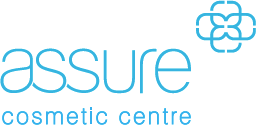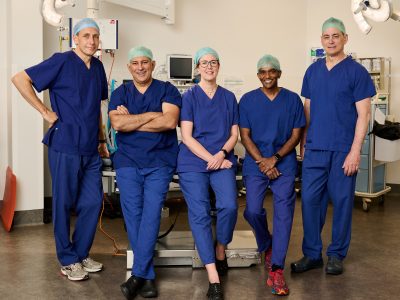Eyelid surgery in Perth, or ‘blepharoplasty’, is a cosmetic procedure on the upper and/or lower eyelids to remove excess skin folds and fatty tissue. It can help reduce the effects of ageing and change overall facial appearance.
Blepharoplasty in Perth
Blepharoplasty surgery will help address bags and wrinkles around the eyes, but will not improve wrinkles of the cheeks, temples or forehead. It does not correct problems caused by drooping eyebrows, as a browlift is specifically designed for this purpose.
Perth eyelid surgery can help with:
- Upper eyelid ptosis: A condition where the upper eyelid sags, partially covering the colored part of the eye, known as the iris.
- Puffy upper eyelids: Occurs when surplus fat accumulates in the upper eyelid, resulting in a swollen appearance.
- Eye bags: Characterised by the gathering of fat and fluid beneath the eyes, causing puffiness and darkened skin.
- Lower eyelid ectropion: A condition where the lower eyelid turns outward, exposing the white part of the eye.
- Lower eyelid dermatochalasis: A condition characterised by the development of excess skin and muscle on the lower eyelid, leading to a droopy and wrinkled appearance.
In Perth, eyelid surgery can be performed on its own or in combination with a facelift or other cosmetic surgery, depending on the desired result.
Book a Consultation
To find out if blepharoplasty in Perth is right for you, the first step is to book a consultation with your Specialist Plastic Surgeon. They will discuss your expectations and any concerns you may have. Pricing and post-operative care will also be discussed.
At Assure Cosmetic Centre, you’re in the care of a highly skilled medical team. Through your journey with us you will feel informed and comfortable and able to make the decision that is best for you.
Frequently Asked Questions
Eyelid (Blepharoplasty)
The primary goal with blepharoplasty surgery is to address specific concerns related to the eyelids. This procedure aims to address issues such as excess skin folds and fat, which can impact facial proportion, vision, and overall comfort. It is essential to understand that blepharoplasty may not be suitable for addressing drooping eyebrows or creases in the forehead, temple, or cheeks. In such cases, additional procedures like a facelift or browlift may be recommended.
It is crucial to manage expectations appropriately, as achieving perfect facial symmetry may not always be possible. Natural facial features often exhibit slight variations between the two sides, and our focus is on address your concerns with your appearance while still maintaining a natural look. Your Specialist Plastic Surgeon at Assure Cosmetic Centre is the best person to determine if your expectations are achievable.
The surgical technique used for blepharoplasty in Perth depends on physical features, the amount of skin and fat to be removed, and your Specialist Plastic Surgeon’s method. Usually, upper and lower eyelid incisions are marked along natural lines, and extend into the ‘crow’s feet’, or smile lines, at the outer edge of the eye. Following removal of excess skin and fat, the incisions are carefully closed. The procedure may take 1-2 hours.
In Perth, blepharoplasty is performed in an accredited hospital, either as a day case or with a short hospital stay. Eyelid surgery may be carried out under local anaesthesia (with or without sedation) or under general anaesthesia.
All plastic, cosmetic and reconstructive surgical procedures come with risks and potential complications. To ensure successful surgery, it is crucial to understand and minimise these risks. Whilst all measures are taken to mitigate risks, some risks are unavoidable.
All information on this page is general in nature – your Specialist Plastic Surgeon will discuss the specific risks and complications pertinent to your individual surgical procedure during your consultation. General risks for surgery are listed here.
Specific risks related to blepharoplasty surgery include, but are not limited to:
- Over-removal of skin: This can lead to the cornea (the clear covering at the front of the eye) being exposed, which can cause pain and irritation. In severe cases, it can even lead to blindness.
- Asymmetry of the eyelids: This can occur if the amount of skin removed from each eyelid is not equal. It is usually a minor problem, but in some cases, it can be quite noticeable.
- Noticeable scarring: The incisions used in eyelid reduction surgery are typically placed in the natural crease of the eyelid, so they are usually not very noticeable. However, in some cases, scarring can be more pronounced.
- Itchiness, excessive tearing, or dryness of the eyes: These problems can occur during the recovery period and usually resolve on their own. However, in some cases, they may persist or become chronic.
- Temporary drooping of the lower eyelid: This is a common side effect of eyelid reduction surgery, and it usually resolves within a few weeks. However, in some cases, it may be permanent.
- Temporary changes in vision: This can occur due to swelling or bruising around the eyes. It is usually temporary, but in some cases, it may persist or become permanent.
- Blindness: This is a very rare complication of eyelid reduction surgery. However, it is more likely to occur in people who smoke, have pre-existing eye diseases, or engage in activities that involve straining, lifting, or coughing.
The usual recovery period for most patients lasts between 7-10 days, during which it is recommended to take necessary precautions like wearing sunglasses. While applying cosmetics is an option, it is vital to prioritise sun protection to protect your skin.
It’s essential to highlight that each patient’s recovery process requires sufficient time, support, and proper postoperative care. Healing abilities and pain tolerance may vary among individuals, resulting in differences in recovery duration and the ability to engage in various activities.
While your surgeon will take great care to minimise their visibility, it’s important to understand that scars are an unavoidable outcome of any surgical procedure. Following a blepharoplasty procedure, the scars are generally positioned along natural skin lines and creases. If you have a history of keloid or hypertrophic scarring, it’s essential to inform your surgeon about this tendency before the procedure.
Although no major complications are expected with a blepharoplasty procedure, you may have some bruising and swelling around the eyes, lasting up to 2-3 weeks. Temporary blurred vision and excessive tear production may also occur. Your Specialist Plastic Surgeon will discuss what you can expect from this procedure. It is important to carefully follow your Specialist Plastic Surgeon’s advice to reduce the risk of complications.
An initial consultation with your Specialist Plastic Surgeon will cost approximately $300-$360, which is payable in full at the time of booking your consultation. Your consultation will take approximately 30-60 minutes. If a Medicare item applies to your potential procedure then you will be entitled to a rebate from Medicare of approximately $80, providing you have a written referral from your GP or specialist. GP referrals are valid for 12 months and specialist referrals for 3 months.
Your Specialist Plastic Surgeon will provide an indication of the likely costs, such as your surgeon’s fee, anaesthetist’s fees and hospital and theatre fees. Your surgeon’s fee includes all post-operative care and nurse dressings. Pricing will vary from case to case, but an indicative range of your surgeon’s fee is $3,000 to $8,000 excluding GST for upper or lower eyelids (pricing will vary from case to case and will be higher if both upper and lower eyelid surgery is required). Anaesthetist, hospital and theatre fees are additional.
There may be Medicare and private health insurance rebates available for some types of eyelid surgery in Perth depending on strict Medicare eligibility criteria. Your surgeon can provide you with more information, but you would then need to talk to your private health insurer to determine exactly how much cover they will provide and confirm what your final out-of-pocket costs will be. For upper eyelid surgery, your surgeon may also refer you to an optometrist or ophthalmologist for a visual field defect test.


